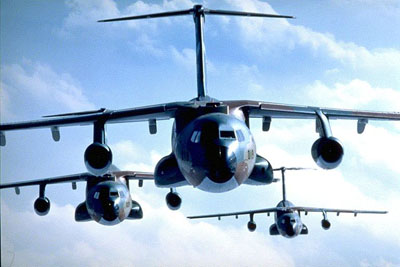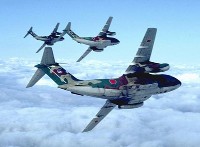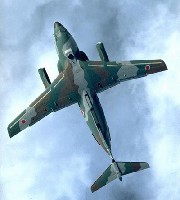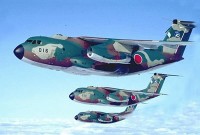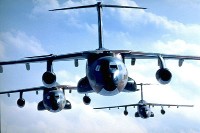Global Aircraft -- C-1
|
Aviation Center
US Attack
US Bombers
US Cargo
US Fighters
US Helicopters
US Patrol/Pursuit
US Reconnaissance
US Tankers
US Trainers
US UAV's
US X Planes
Orbiter Vehicles
WWI Aircraft
WWII Aircraft
Airbus
Antonov
Boeing
Dassault
Ilyushin
Kamov
MiG
Mil
Saab
Sukhoi
Tupolev
Yakovlev
Joint/Rest of World
Entertainment Center
Members Center
New Technologies
Contact Us
Extra Navigation
GAC Engine
C-1 Specifications
C-1 Background
In 1966, the JASDF transport fleet was composed primarily of Curtiss C-46 Commandos, a retired midwar American design built in large numbers before the end of World War II. While relatively capable for its time, the C-46 did not fare well in comparison to newer aircraft such as the Lockheed C-130 Hercules, and the JASDF therefore elected to replace it with a domestically-designed and -manufactured transport aircraft.
For this purpose, they turned to the Nihon Aircraft Manufacturing Company, a consortium of several major corporations, which had begun to produce commercially its YS-11 airliner four years earlier. NAMC decided that Kawasaki Heavy Industries was to be the prime contractor, and the airplane thus bears that company's name. Fully developed by Kawasaki Heavy Industries and Japanese design, this aircraft has been used as military transport for the Japan Self Defense Forces since its maiden flight in November 1970. Japanese policies at the time on military equipment were strict in that they were not to have offensive capabilities, and so the maximum range was cut in order to keep the aircraft's operational range inside Japan. This proved to be a problem after Okinawa was returned to Japan from the US, and the aircraft had trouble reaching the island from distant areas. Thus production was terminated and the C-130 was introduced. | ||||||||||||||||||||||||||||||||||||||||||||||
